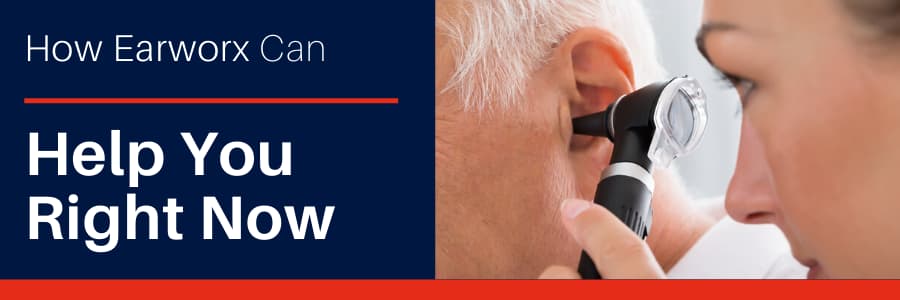As you know, in the interests of the health and safety of our community, Earworx temporarily closed its Tasmanian and New South Wales clinics in March to help prevent the spread of COVID-19.
Staying at home, socially distancing and being unable to access services due to multiple closures has impacted on all of our lives in some manner – these are very challenging times.
Here at Earworx, we have continued to monitor events daily as they have unfolded and government directives as they have been issued.
Our Potential Reopening Dates
We are closely monitoring Federal and State Government directives, as well as the spread of the COVID-19 virus locally to determine potential reopening dates for our New South Wales and Tasmanian clinics.
Given things are changing on a daily basis, these dates may also change, but for now the strictly mitigated ‘goal to reopen’ dates are as follows:
- Hobart: Monday 4 May
- Launceston: Monday 4 May
- Ulverstone: Thursday 14 May
- Bondi Junction: Late May or early June depending on health authority advice
Please note our Canberra clinics remain open. Operating in partnership with Fullerton Health, our Canberra clinics are located within medical centres, which have remained open to care for the health of the community during the pandemic.
How Earworx Can Help You Right Now
Earworx has been offering free phone consultations since our temporary closure, and advice around managing your earwax at home whilst you are unable to access our services.
Please contact us via [email protected] or 1800 327 967 should you require a free phone consultation.
You can also explore the news section on our website for more information on earwax management.
In the meantime, try some of our top tips for managing earwax build up.
Top Tips for Managing Earwax Build Up at Home
Try earwax softening drops as your first port of call for a blocked ear due to wax build up. Ear Clear is our product of choice but any softening drops will work. They will work to both soften and break down wax and may at least create a gap in the wax to enable relief from the feeling of blockage, even if the wax is not removed in its entirety. Sprays are best saved for once the ear is clear as a preventative.
If you are unable to leave home, try a home-made recipe of a quarter of a teaspoon of bicarbonate of soda to 10 mls of water*. Mix up a fresh batch daily and use as you would softening drops. Ensure the mixture is room temperature/warm when administering as cold water in the ear may make you dizzy.
If you are going to try ‘self-syringing’ kits from the chemist, use with caution. Soften your wax very well prior to ensure you need to apply the least amount of water pressure. Use the correct temperature of water (again, cold water may make you dizzy) and follow strictly the instructions on the box. Be aware that if wax is not removed and water remains stuck behind the wax, this may worsen symptoms or take a few days to dry out – please attend your GP if you have any concerns.
Avoid the cotton buds! This is of course a given but it is worth the reminder ?. Cotton buds or any other implements used in the ear may not only push wax further down the canal, worsening symptoms, they may also damage the delicate structures of your ear. Nothing smaller than your elbow!
Avoid ear candling. Per the guidelines*, we are obliged as clinicians to recommend against ear candling for treating or preventing wax impaction. Studies have shown not only do they not work, they may push wax further down the canal, worsening symptoms, but may also cause hair fires, trauma to the ear canals and burns to the ear canal and drum.
Please attend your local GP with any concerns to do with your ears in the interim. Severe pain, bleeding or discharge from the ear is unlikely to be wax related and may require medical attention.
How to Tell if it’s Earwax Build Up Causing My Blocked Ear or Something Else?
Without looking into the ears, it is difficult for a clinician to determine the cause of a blocked ear. Until Earworx reopens, please attend your GP for assessment and management. In the meantime, symptoms of wax build up include:
- Blockage
- Hearing loss
- Itching
- Ringing
- Fullness
- Pain
- Odour
Ask yourself:
- Have you had an issue with wax build up in the past? If not, it may not be wax.
- Has anything changed with your ears that may have contributed to wax build up that may not have been there before? For example, have you started wearing hearing aids or earplugs, or started using cotton buds?
- Is your ear blocking following showering or swimming? If so, suspect wax. Water can become trapped behind built up wax and take days to dry out.
- Are you waking up with a blocked ear that clears over the course of the morning, then re-blocks again overnight? If so, suspect wax.
Your wonderful and highly trained Earworx Registered Nurses are really looking forward to seeing you in one of our clinics as soon as we can open safely for you. Wax removal is what we do best and we are missing it and all of our wonderful clients! Take care, stick with it and we will see you all soon.
Kindest regards and thoughts during this time for you and your families.
*Kamlen M, 1999, Which Cerumenolytic? Australian Family Physician, Vol 28 no 8 p
*Schwartz et al 2017, Clinical Practice Guideline (Update): Earwax (Cerumen Impaction), Otolaryngology-Head and Neck Surgery Vol 156 (IS) SI-S29








